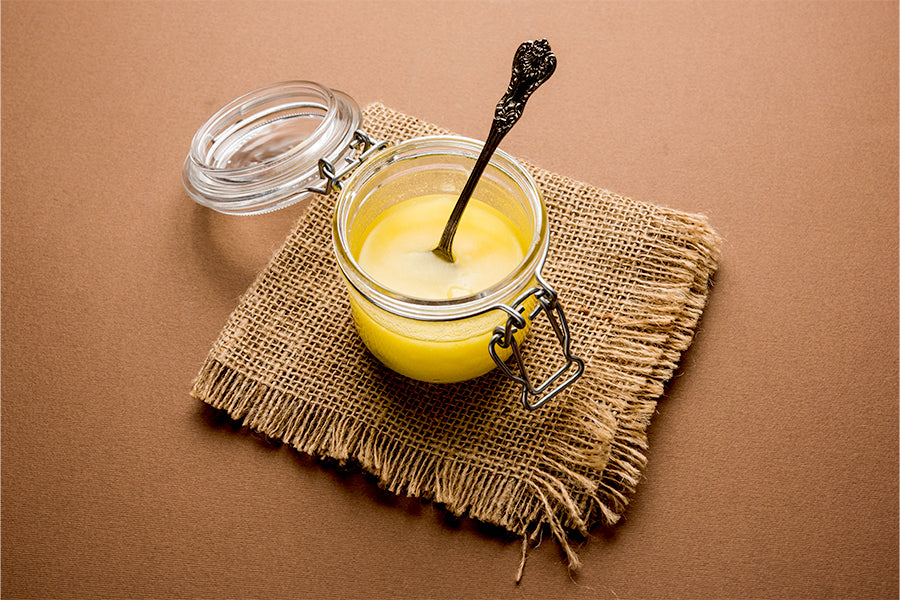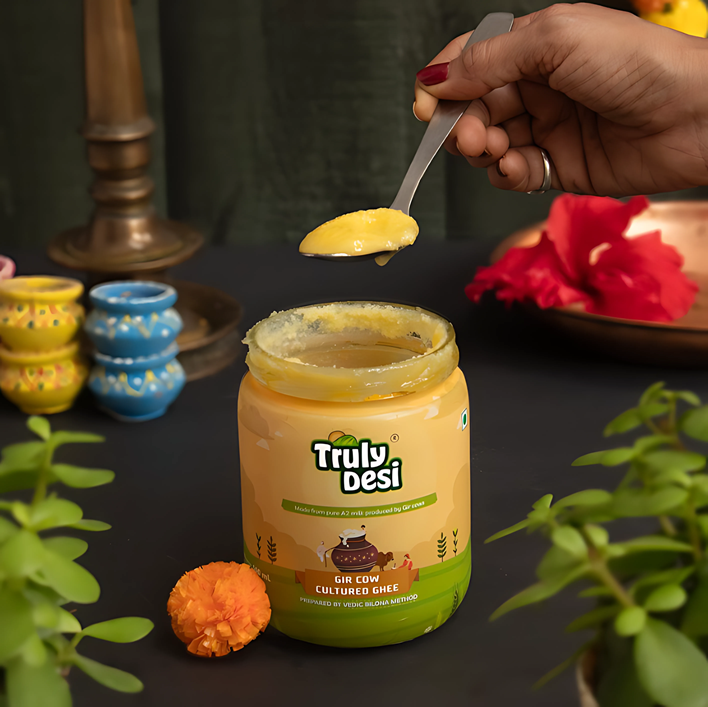
How to Spot Pure Ghee: 5 Tests to Avoid Adulterated Products
Ghee is an essential part of Indian kitchens. From spreading on rotis to adding in dal, every spoon carries taste and tradition. But in today’s market, not every pack of ghee is genuine. Many products are mixed with oils, starch, or other substances. That is why learning how to identify pure ghee is important for your health and family.
This guide explains 5 simple tests to check the purity of ghee at home. You can try these without any special tools.
Why Pure Ghee Matters?
Pure ghee is rich in healthy fats, vitamins A, D, E, and K. It supports digestion, strengthens immunity, and boosts energy. Adulterated ghee, on the other hand, may harm your health. It can raise bad cholesterol, cause digestion issues, and reduce nutrition.
So before you buy, you must know how to test purity of ghee at home.
1. The Heating Test
Take one spoon of ghee in a pan. Heat it on a low flame.
- If it melts quickly and turns brownish while releasing a strong aroma, it is pure ghee.
- If it forms layers or leaves a sticky residue, it may be mixed with oils.
2. The Fridge Test
Put a small bowl of ghee in the refrigerator for 30 minutes.
- Pure ghee will solidify evenly.
- If it shows two layers or separates, it indicates adulteration.
3. The Iodine Test
This is a common ghee adulteration test.
- Take 1 teaspoon of melted ghee.
- Add a few drops of iodine solution.
- If the color changes to blue, starch is present. That means the ghee is impure.
4. The Palm Test
Rub a little ghee between your palms.
- Pure ghee melts easily and gives a soothing fragrance.
- If it feels greasy for long or has no aroma, it may not be pure.
5. Using a Ghee Testing Kit
For extra assurance, you can use a ghee testing kit available in the market. These kits give quick results and confirm adulteration with simple steps.
How Truly Desi Ensures Purity?
At Truly Desi, we believe good health starts with honest food. Our ghee is made from A2 cow milk through traditional bilona method. No shortcuts, no adulteration, and no compromise. Every batch is tested for purity so that you can trust every spoon.
Final Thoughts
Knowing how to identify pure ghee saves you from harmful products. Simple home tests can help you stay safe. And when you want authentic nutrition, choose ghee that is tested and trusted.
Frequently Asked Questions on Ghee Purity
1. How to identify pure ghee at home?
You can identify pure ghee with simple tests like the heating test, palm test, fridge test, or by using a ghee testing kit. Pure ghee melts quickly, has a rich aroma, and solidifies evenly when refrigerated.
2. What is the easiest ghee adulteration test?
The iodine test is one of the easiest. Add iodine to melted ghee. If the color turns blue, starch or adulterants are present.
3. Does pure ghee solidify in winter?
Yes. Pure ghee naturally solidifies in cold weather and melts in warm temperatures. This is a normal property of unadulterated ghee.
4. Can we trust a ghee testing kit?
Yes. A ghee testing kit is designed to detect common adulterants. It gives faster and more reliable results compared to home methods.
5. Why is Truly Desi ghee considered pure?
Truly Desi ghee is made from A2 cow milk using the bilona method. Every batch is tested for quality, ensuring 100% purity without harmful additives.





